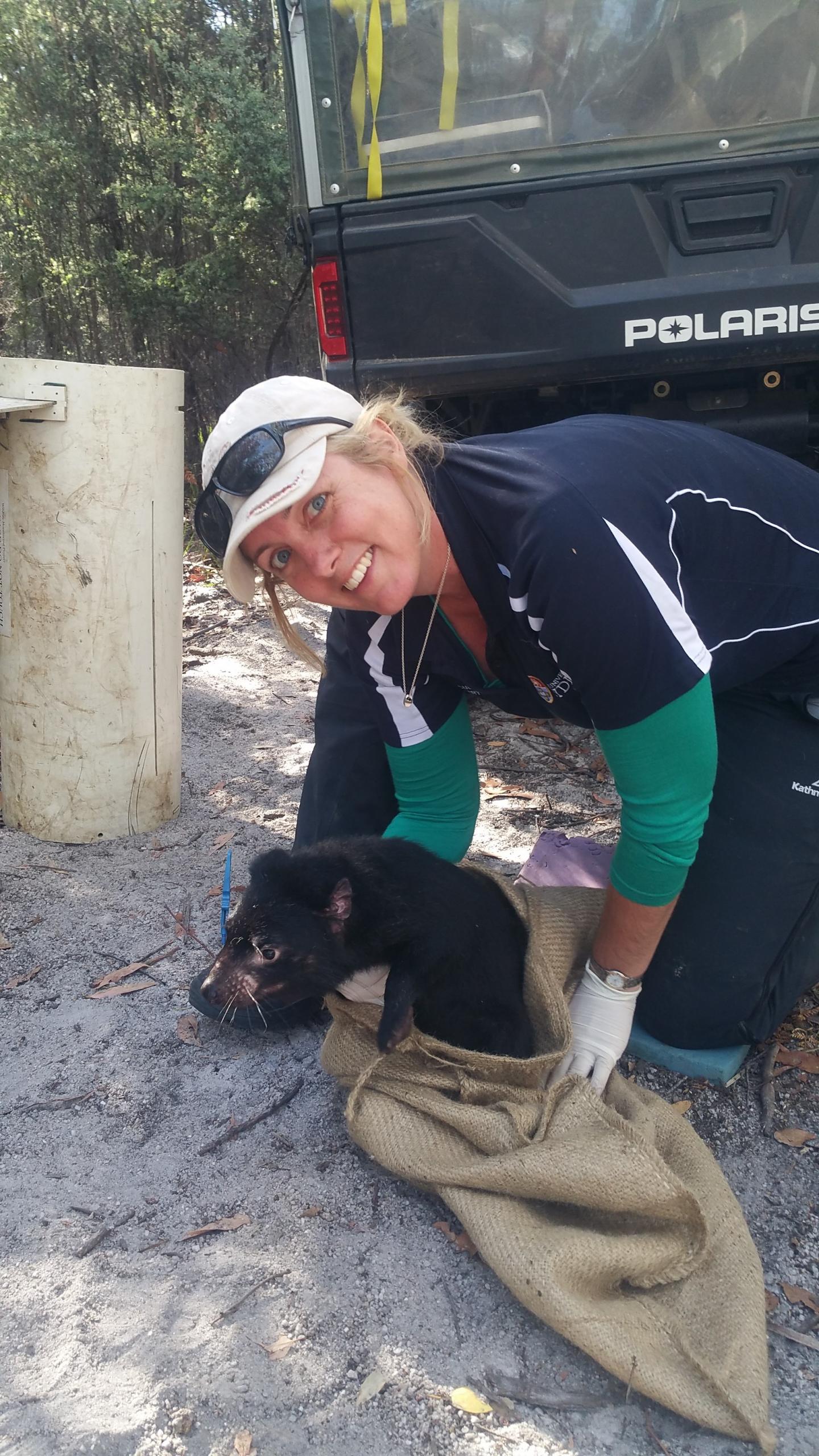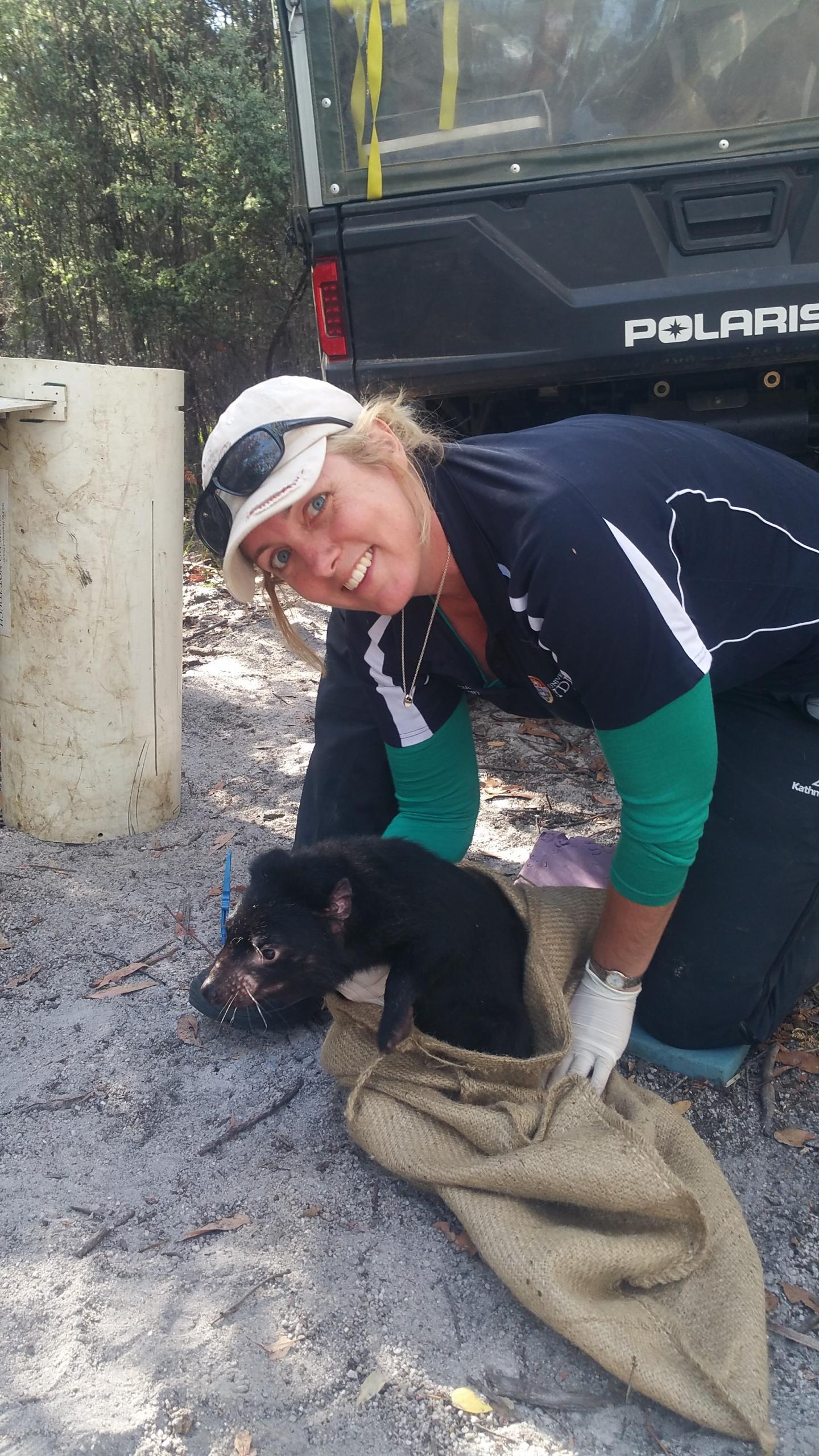
Credit: Phil Wise took the photo on Dr Hogg's camera.
A group of researchers based at the University of Sydney has uncovered patterns that may be jeopardising the long-term success of worldwide animal breeding programs, which increasingly act as an insurance against extinction in conservation, and for food security.
The meta-analysis, led by the University of Sydney's Faculty of Science, found captive-born animals had, on average, almost half the odds of reproductive success compared to their wild-born counterparts in captivity.
In aquaculture, the effects were particularly pronounced, although research and conservation programs showed the same trend.
The study analysed more than 100 results, from 39 animal studies of 44 diverse species including shrimp, fish, mice, ducks, lemurs and Tasmanian devils.
The paper, "A meta-analysis of birth-origin effects on reproduction in diverse captive environments", is published today in Nature Communications.
Dr Catherine Grueber, who supervised the study, said the team was surprised at how universal the patterns were.
"More than 2,000 threatened species rely on successful reproduction through captive breeding programs for conservation alone," said Dr Grueber, from the University of Sydney's School of Life and Environmental Sciences and San Diego Zoo Global.
"In order to maintain our food supply, it's crucial we improve captive breeding; for example, the aquaculture industry is looking at introducing new species for commercialisation."
Lead author, PhD student Ms Kate Farquharson, said the results provide opportunities for improving the long-term success of animal breeding programs.
"Our dataset included measurements of lots of different reproductive traits – such as fertility, number of offspring, and timing of reproduction – but found that certain traits, such as offspring weight and mothering ability, seem to be the most strongly affected," Ms Farquharson said.
"This provides an opportunity for animal breeding programs, by identifying the areas where improvement could boost sustainability."
Research manager at the University of Sydney's Australasian Wildlife Genomics Group, co-author Dr Carolyn Hogg, said the research could be extended by undertaking multi-generational studies.
"Identifying limitations as well as opportunities in captive breeding programs across all industries is an urgent priority," Dr Hogg said.
###
NOTES TO EDITORS
- The study covered animal breeding programs in aquaculture, conservation and research. It included invertebrates, fish, birds and mammals.
- Across the animal kingdom, captive-born animals were found to average 42 percent decreased odds of reproductive success, compared to those that are wild-born.
- Considerable research has explored differences between captive and wild populations; less attention has been given to finding patterns across species.
- In conservation, captive breeding has been recommended by the International Union for the Conservation of Nature (IUCN) Red List assessors for 2199 species to reduce the threat of extinction.
Media Contact
Vivienne Reiner
[email protected]
61-438-021-390
@SydneyUni_Media
http://www.usyd.edu.au/
Related Journal Article
http://dx.doi.org/10.1038/s41467-018-03500-9





